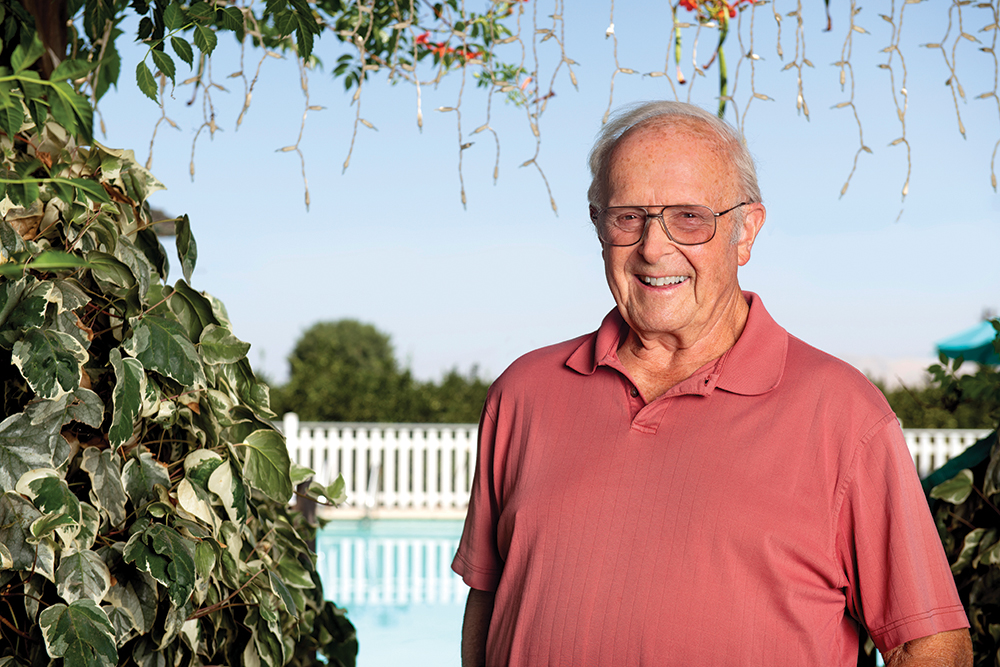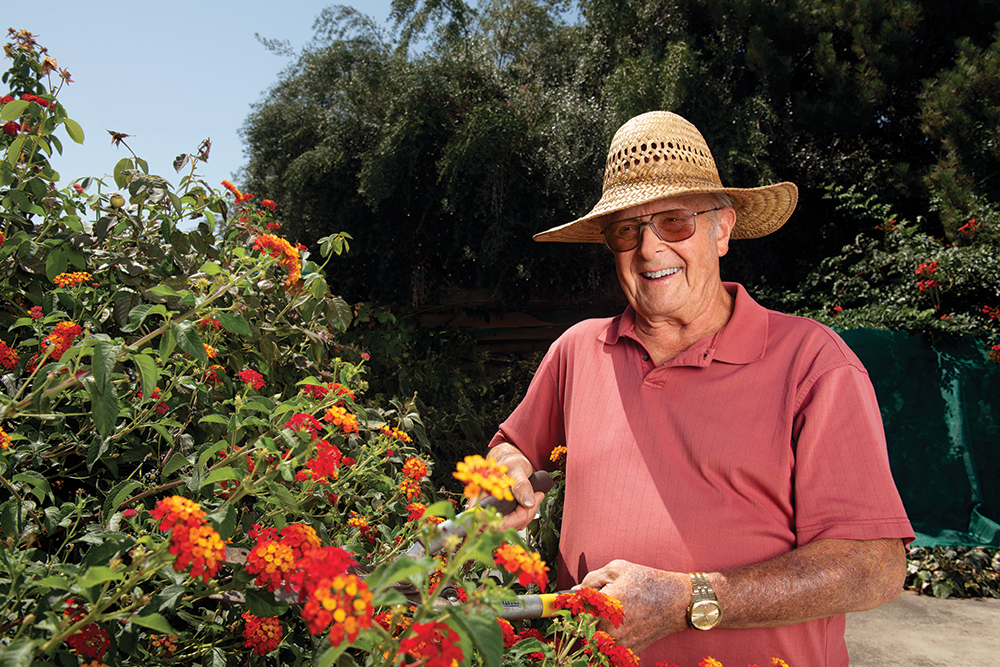
Specialists at Keck Medicine’s USC Cardiac and Vascular Institute are revolutionizing treatment for aortic valve disease in a series of life-changing clinical trials.
As Bill Walston tended the oranges and grapes growing on his Visalia ranch or hiked across the Central Valley countryside, he often felt a worrying shortness of breath and fatigue.
The retired school superintendent thought it was simply a sign of aging. He kept his symptoms to himself, not even telling his wife, Judy.
But in 2014, Walston, then 76, had a mild heart attack and doctors opened a blocked artery with a stent. Two years later, another attack required a second stent. The interventions helped, but not enough.
Aortic stenosis can lead to heart failure
The problem: aortic stenosis, a narrowing of the aortic valve opening. When the valve’s flaps or leaflets become stiff and thick from calcium deposits, they have difficulty opening and closing.
That forces the heart to work harder to pump blood to the rest of the body. Left untreated, aortic stenosis can lead to fatal heart failure.
By April 2019, Walston needed a new valve. His cardiologist sent him to a place where a team of interventional cardiologists and cardiac surgeons are pushing the boundaries of heart valve repair and replacement: Keck Medicine’s USC Cardiac and Vascular Institute.
Advancements in Transcatheter Aortic Valve Replacement
The Walstons arrived at Keck Medicine at a fortuitous moment. Traditionally, treatment for aortic stenosis has been open heart surgery, with cardiac surgeons having to cut the chest bone and open the rib cage to replace the affected valve.
Over the past decade, Keck Medicine cardiovascular specialists have helped to perfect a game-changing minimally invasive procedure called Transcatheter Aortic Valve Replacement (TAVR).
“We’ve been on the cutting edge of developing this therapy,” says Ray Matthews, MD, professor of clinical medicine at the Keck School of Medicine of USC, and director of the catheterization lab at Keck Medicine.
TAVR is a minimally-invasive procedure
Starting in 2011, TAVR has been tested in a series of multi-institutional trials for a full range of patients with aortic disease. Initially, it was tested in high-risk patients not recommended for surgery, then patients at intermediate surgical risk, and finally, patients for whom surgery is considered low risk.
In the TAVR procedure, doctors don’t need to open the chest. Instead, they make an extremely small incision in the groin.
We are changing what surgery looks like for these patients.
Ray Matthews, MD, catheterization lab director, Keck Medicine of USC
Once at its destination, the catheter is positioned to push the new valve (made from bovine or porcine pericardial tissue) into place over the damaged old one, resulting in a kind of valve-within-a-valve.
“We are changing what surgery looks like for these patients,” Matthews says.
Patients with active lifestyles are considered to be at lower risk
Although 81, an age when surgery can be chancy for many patients, Walston fell into the low-risk group because of his active lifestyle. He is a former soccer coach and Boy Scout leader.
He was happy to join the clinical trial. “I was very lucky there was a procedure that could be done so easily,” Walston says.
What helped make it even easier for Walston was the model of care at Keck Medicine. The Centers for Medicare & Medicaid Services require that centers performing the TAVR studies have both an interventional cardiologist and a cardiac surgeon involved.
That spirit of interdisciplinary collaboration was already in place at Keck Medicine. Within the CVTI, cardiologists no longer hand off cases to cardiac surgeons.
“We review the data together and discuss the treatment options, then we meet with the patient together in our valve clinic,” says cardiac surgeon Mark J. Cunningham, MD, director of structural heart surgery and surgical director of the heart transplant program.
The entire cardiac team was “amazingly warm, so friendly,” Judy Walston remembers. Equally important, “you’re not a number,” she adds. The attention is individual, as are the solutions.

TAVR procedure may improve patient outcomes
On Walston’s procedure day, Matthews and Cunningham entered a hybrid operating room. It was designed by Cunningham as a combination surgical suite and catheterization lab.
Supporting them was both a surgical team and a catheterization team to ensure backup was in place if Walston required surgery.
“We take that extra step as part of Keck Medicine’s commitment to safety for the patient,” says Cunningham, associate professor of clinical surgery at the Keck School.
Bill’s procedure, in which the team guided a specialized valve into place, went without complications. Most TAVR procedures take about an hour and a half, compared with four hours for surgical valve replacement.
I was lucky there was a procedure that could be done so easily.
Bill Walston, patient, Keck Medicine of USC
Findings from the low-risk TAVR trial, in which Walston participated, echoed those of earlier studies. It showed that TAVR has an excellent safety profile and performed as well, or better than, surgical replacement.
Results included shorter hospital stays, quicker recovery times and improved quality-of-life scores.
Researchers are tracking TAVR patients’ progress over time
In August 2019, the U.S. Food and Drug Administration approved the use of TAVR in low-risk patients, extending it to all levels of patients. TAVR essentially has become the “gold-standard” treatment, taking the place once occupied by surgery.
However, there still will be patients for whom TAVR is not the first-line choice, including those with bicuspid valves (two leaflets instead of the normal three), as well as those who can’t tolerate blood thinners or have active heart infections.
What’s needed next is data on TAVR’s long-term durability and treatment outcomes. Patients like Walston are enrolled in registries that will follow them over the next decade.
“We must be cautious,” Matthews says, “at the same time we want to move this paradigm forward. That’s what progress is.”
Building on its experience, USC CVTI is currently enrolling patients in two clinical trials studying transcatheter mitral valve replacement.
For Bill and Judy Walston, progress has opened up new adventures. Home after two days in Keck Hospital of USC, he noticed how effortless it was to get a full breath and walk farther.
“Hiking a trail has become a lot easier,” he says. “It’s so nice not to get tired.”
Both avid travelers, they had written off a planned trip to Machu Picchu, the Incan citadel in Peru, because it seemed too rigorous. Now that trip is back on, Walston adds, “one more thing to check off our bucket list.
Topics


